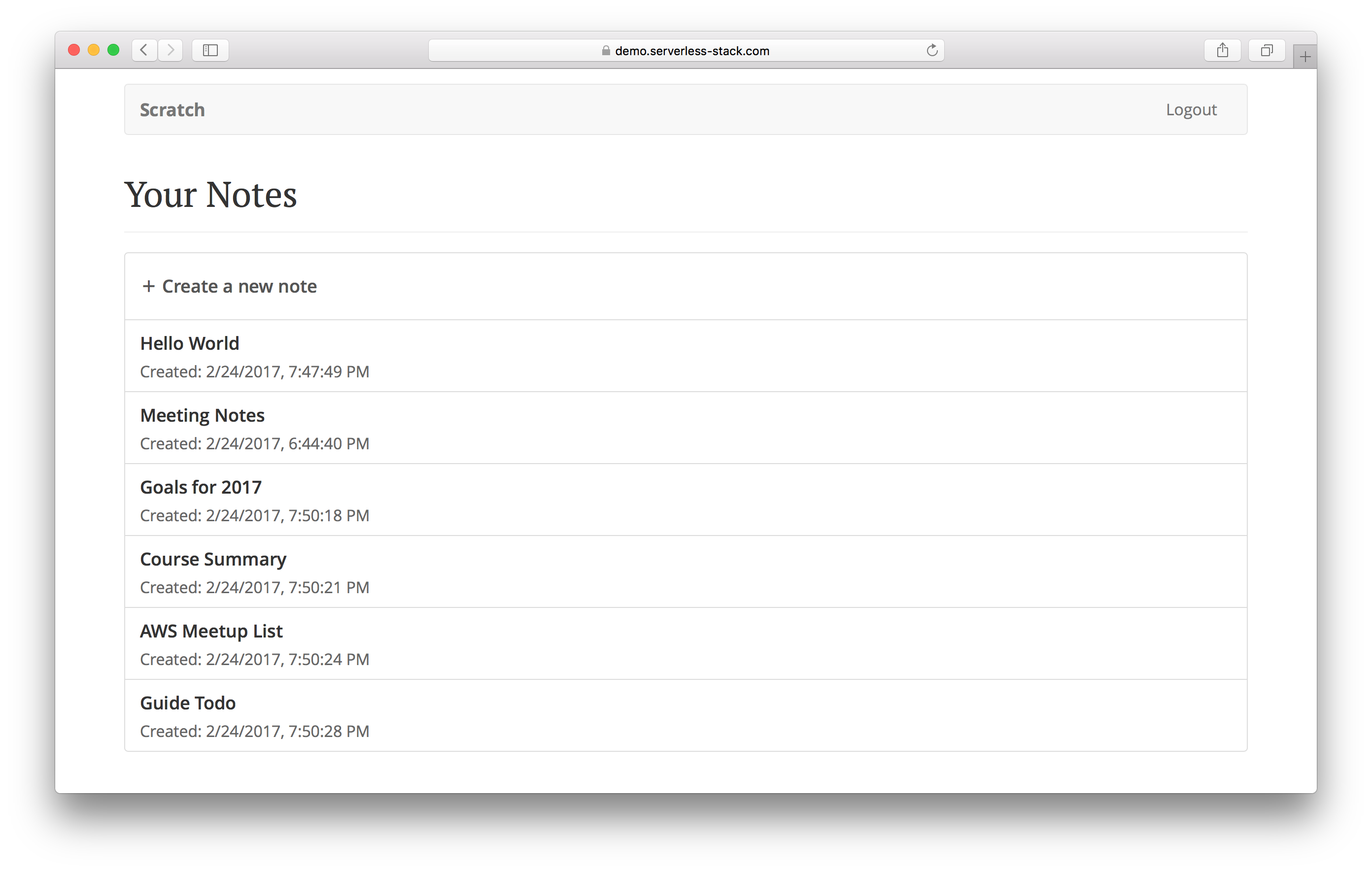What Does This Guide Cover?
To step through the major concepts involved in building web applications, we are going to be building a simple note taking app called Scratch.


It is a single page application powered by a serverless API written completely in JavaScript. Here is the complete source for the backend and the frontend. It is a relatively simple application but we are going to address the following requirements.
- Should allow users to signup and login to their accounts
- Users should be able to create notes with some content
- Each note can also have an uploaded file as an attachment
- Allow users to modify their note and the attachment
- Users can also delete their notes
- App should be served over HTTPS on a custom domain
- The backend APIs need to be secure
- The app needs to be responsive
We’ll be using the AWS Platform to build it. We might expand further and cover a few other platforms but we figured the AWS Platform would be a good place to start. We’ll be using the following set of technologies to build our serverless application.
- Lambda & API Gateway for our serverless API
- DynamoDB for our database
- Cognito for user authentication and securing our APIs
- S3 for hosting our app and file uploads
- CloudFront for serving out our app
- Route 53 for our domain
- Certificate Manager for SSL
- React.js for our single page app
- React Router for routing
- Bootstrap for the UI Kit
While the list above might look daunting, we are trying to ensure that upon completing the guide you’ll be ready to build real-world, secure, and fully-functional web apps. And don’t worry we’ll be around to help!
The guide covers the following concepts in order.
For the backend:
- Configure your AWS account
- Create your database using DynamoDB
- Set up S3 for file uploads
- Set up Cognito User Pools to manage user accounts
- Set up Cognito Identity Pool to secure our file uploads
- Set up the Serverless Framework to work with Lambda & API Gateway
- Write the various backend APIs
For the frontend:
- Set up our project with Create React App
- Add favicons, fonts, and a UI Kit using Bootstrap
- Set up routes using React-Router
- Use AWS Cognito SDK to login and signup users
- Plugin to the backend APIs to manage our notes
- Use the AWS JS SDK to upload files
- Create an S3 bucket to upload our app
- Configure CloudFront to serve out our app
- Point our domain with Route 53 to CloudFront
- Set up SSL to serve our app over HTTPS
We think this will give you a good foundation on building full-stack serverless applications. If there are any other concepts or technologies you’d like us to cover, feel free to let us know via email.
If you liked this post, please subscribe to our newsletter, give us a star on GitHub, and follow us on Twitter.
For help and discussion
Comments on this chapter